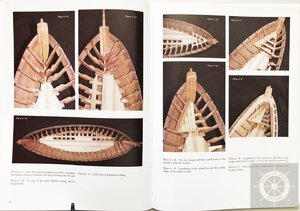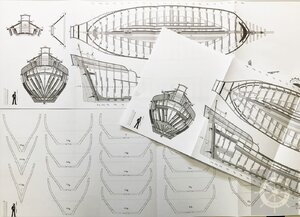Planset Review:
Fortuné Joseph
ALLÈGE D’ARLES
1833
a flat-bottom 1833 river tartane
by Franco Fissore translated by F. Fougerat


The Arles lighter and a flat-bottom 1833 river tartan from Provence.
The historic and graphic documentation allowed for the design of all the details of the structure and the furniture.
available in scales 1:48 or 1:36 in english, french, italian or spanish language directly by ancre

 ancre.fr
ancre.fr

model made by the author Franco Fissore


Here you can find a step by step photo report of the model construction:
Size of the model

SYNOPSIS:
As I had previously published four monographs of Mediterranean vessels, the 1903 Puna from the Western coast of Liguria, the 1863 tartan Gemma, the 1759 felluca Nostra Senioria del Rosario, and the 1759 Mediterranean pinky Santa Caterina, I thought of building another wooden boat, but this time a French river boat, the Arles lighter of 1833, a fl at-bottom tartan.
A small Mediterranean sailing ship that was very common in past centuries, it was rigged with a masthead cap (calcet) a lateen sail and a jib called a “polacre” on a short bowsprit. It could also carry a small square sail bent on a yard under the mast cap. Hoping to please all the readers and modelers who have followed my previous works, I am adding this small boat to the collection of Mediterranean vessels, in an attempt to expand the knowledge about a commercial and fishing fleet that was important in the French and Ligurian coastal areas and has been represented but little in our modeling world. The availability of documentation relating to this small vessel, the French maritime culture and its rich archives allowed me to collect the necessary information.
This information consists in pictorial records, documents, and manuscripts. We have collected suffi cient documentation to put together a monograph that will provide for the construction of a beautiful and well detailed and designed built-up model. The historic and graphic documentation allowed for the design of all the details of the structure and the furniture. Finally, and not least, for the addition of stern decoration, the very soul of these vessels.
CONTENT:

COMPOSITION OF THE MONOGRAPH
A 144-page booklet in 23x31 cm format including 80 pages in full color, on the construction of model, along with 60 drawings and 280 color photographs.
The monograph contains the 16 plates at the 1/48 and 1/96 scales necessary for the construction of the timber frame.

1 Schematic elevation, plan view
2 Horizontal, vertical and cross-sections
3 Fore-and-aft structure broken down into elements
4 The frames in true size
5 Horizontal, vertical sections and crosssection
6 Horizontal, vertical and cross sections clamps and clamp liners
7 Horizontal, vertical and cross-sections
8 Beams, brackets, knees and mast steps
9 Beams, brackets, knees, mast step and deck
10 Deck furniture
11 Section
12 Completed hull
13 Detailed drawings of all pieces of furniture
14 Sails
15 Details of the running rigging
16 Allege d’Arles lighter under sail
Look Inside of the booklet:
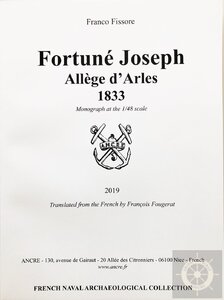
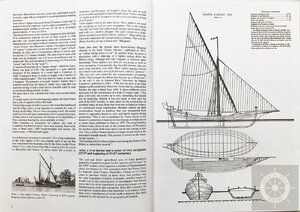




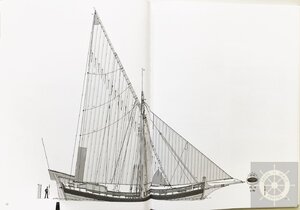


For more please take a look at the following post
Fortuné Joseph
ALLÈGE D’ARLES
1833
a flat-bottom 1833 river tartane
by Franco Fissore translated by F. Fougerat


The Arles lighter and a flat-bottom 1833 river tartan from Provence.
The historic and graphic documentation allowed for the design of all the details of the structure and the furniture.
available in scales 1:48 or 1:36 in english, french, italian or spanish language directly by ancre

Monographie Allège d’Arles - 1833 - Ancre
The Arles lighter and a flat-bottom 1833 river tartan from Provence. The historic and graphic documentation allowed for the design of all the details of the structure and the furniture. Available

model made by the author Franco Fissore


Here you can find a step by step photo report of the model construction:
Size of the model

SYNOPSIS:
As I had previously published four monographs of Mediterranean vessels, the 1903 Puna from the Western coast of Liguria, the 1863 tartan Gemma, the 1759 felluca Nostra Senioria del Rosario, and the 1759 Mediterranean pinky Santa Caterina, I thought of building another wooden boat, but this time a French river boat, the Arles lighter of 1833, a fl at-bottom tartan.
A small Mediterranean sailing ship that was very common in past centuries, it was rigged with a masthead cap (calcet) a lateen sail and a jib called a “polacre” on a short bowsprit. It could also carry a small square sail bent on a yard under the mast cap. Hoping to please all the readers and modelers who have followed my previous works, I am adding this small boat to the collection of Mediterranean vessels, in an attempt to expand the knowledge about a commercial and fishing fleet that was important in the French and Ligurian coastal areas and has been represented but little in our modeling world. The availability of documentation relating to this small vessel, the French maritime culture and its rich archives allowed me to collect the necessary information.
This information consists in pictorial records, documents, and manuscripts. We have collected suffi cient documentation to put together a monograph that will provide for the construction of a beautiful and well detailed and designed built-up model. The historic and graphic documentation allowed for the design of all the details of the structure and the furniture. Finally, and not least, for the addition of stern decoration, the very soul of these vessels.
CONTENT:

COMPOSITION OF THE MONOGRAPH
A 144-page booklet in 23x31 cm format including 80 pages in full color, on the construction of model, along with 60 drawings and 280 color photographs.
The monograph contains the 16 plates at the 1/48 and 1/96 scales necessary for the construction of the timber frame.

1 Schematic elevation, plan view
2 Horizontal, vertical and cross-sections
3 Fore-and-aft structure broken down into elements
4 The frames in true size
5 Horizontal, vertical sections and crosssection
6 Horizontal, vertical and cross sections clamps and clamp liners
7 Horizontal, vertical and cross-sections
8 Beams, brackets, knees and mast steps
9 Beams, brackets, knees, mast step and deck
10 Deck furniture
11 Section
12 Completed hull
13 Detailed drawings of all pieces of furniture
14 Sails
15 Details of the running rigging
16 Allege d’Arles lighter under sail
Look Inside of the booklet:









For more please take a look at the following post



